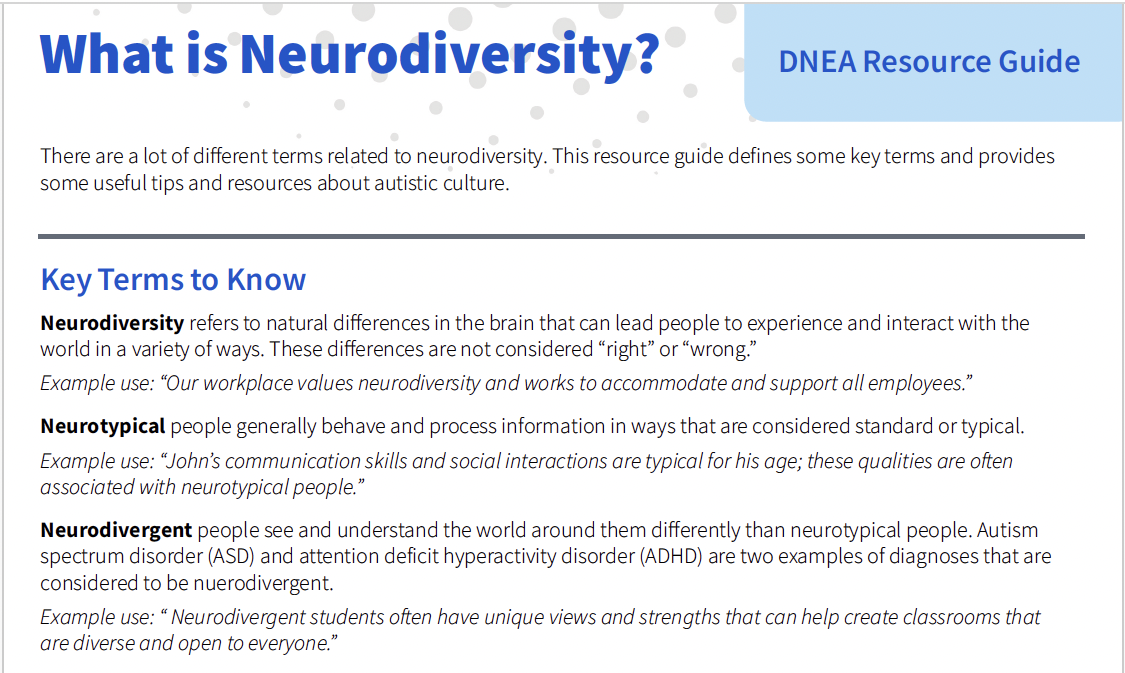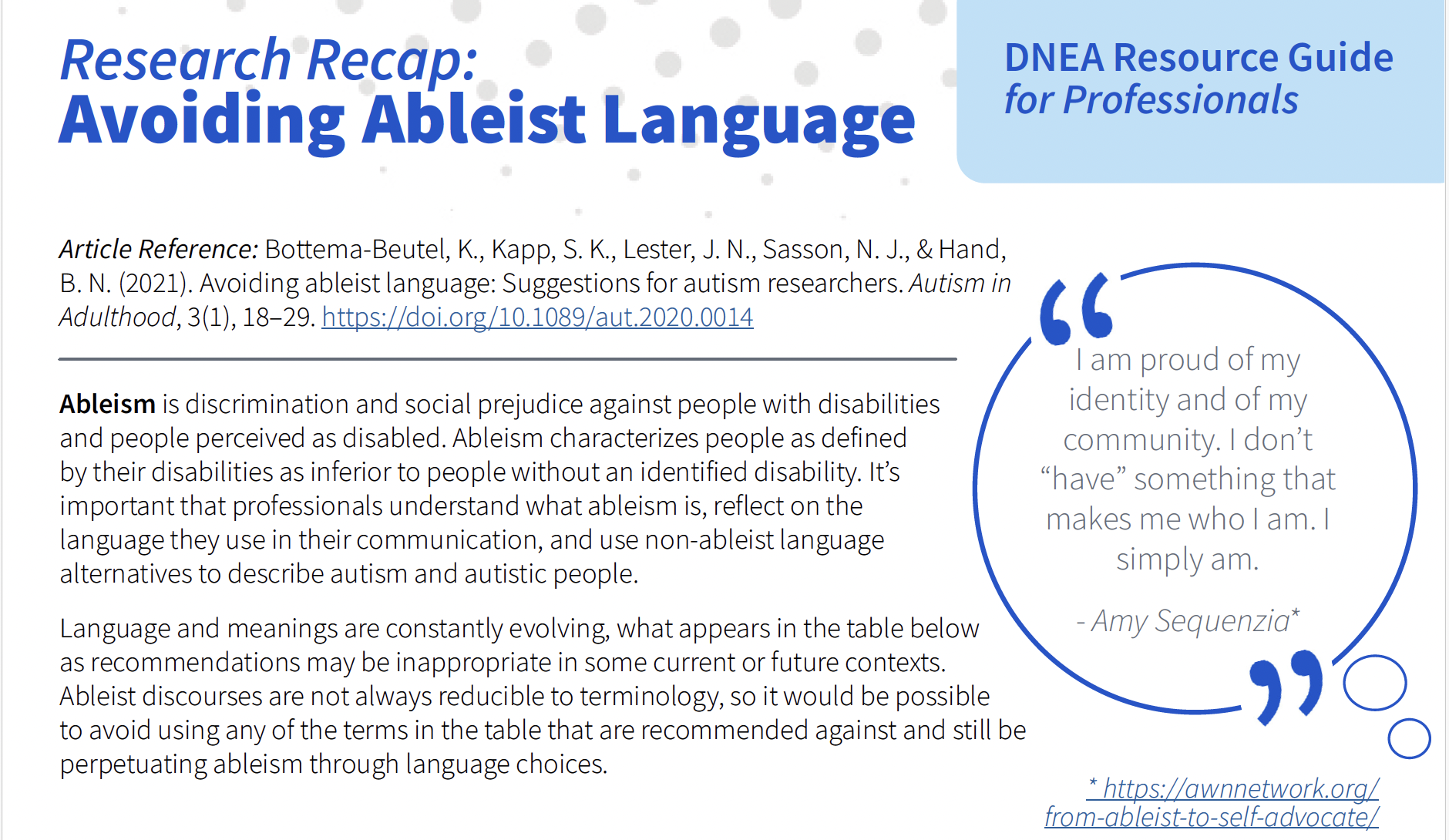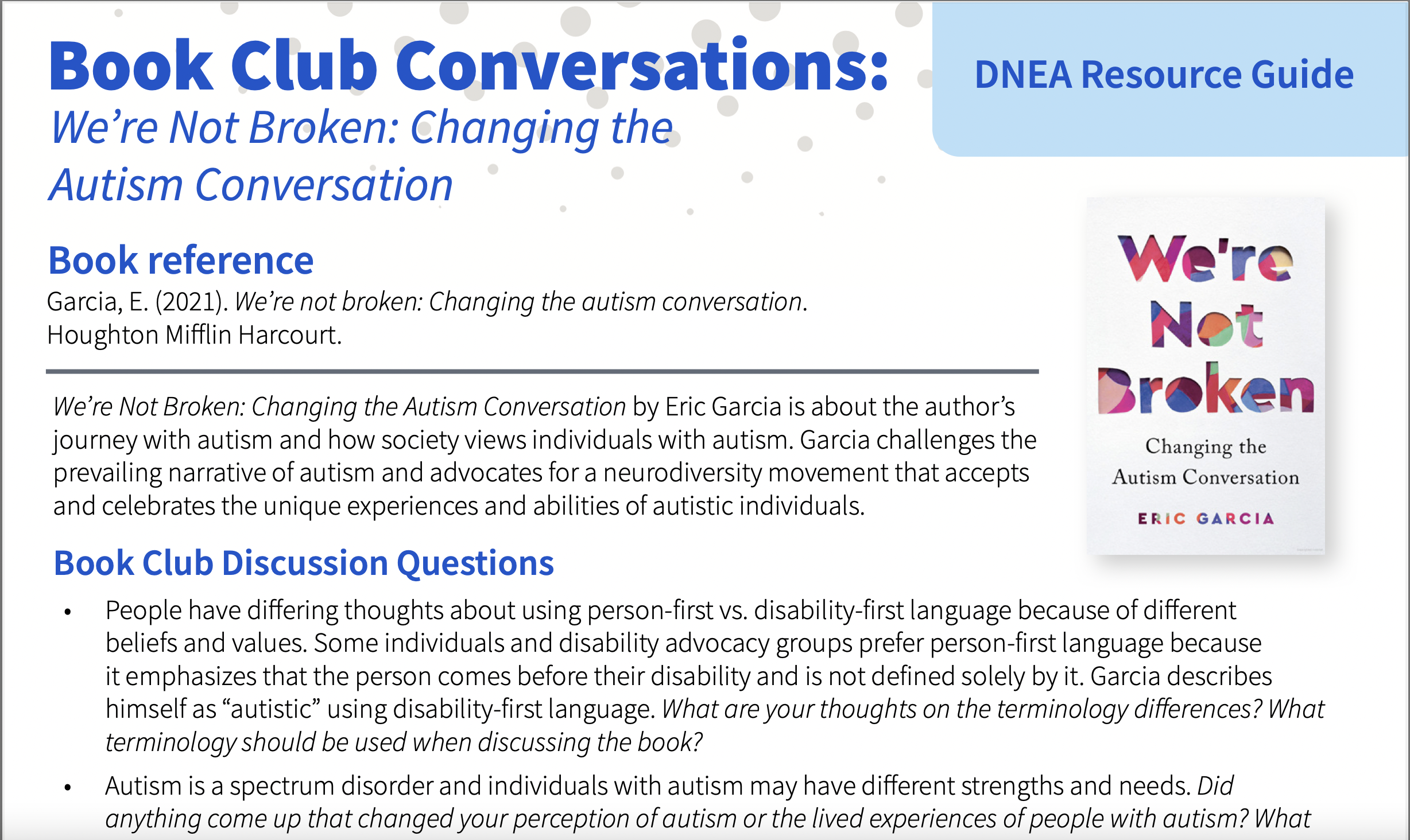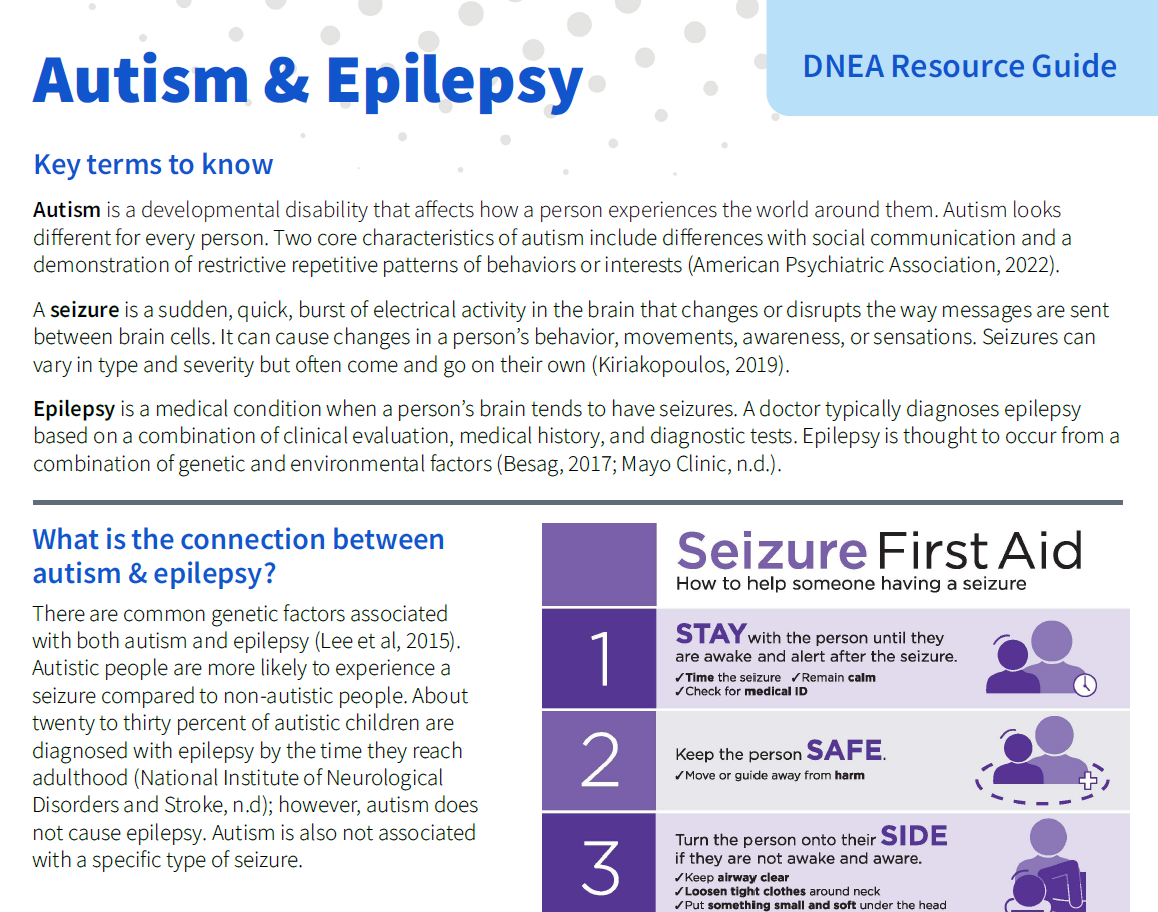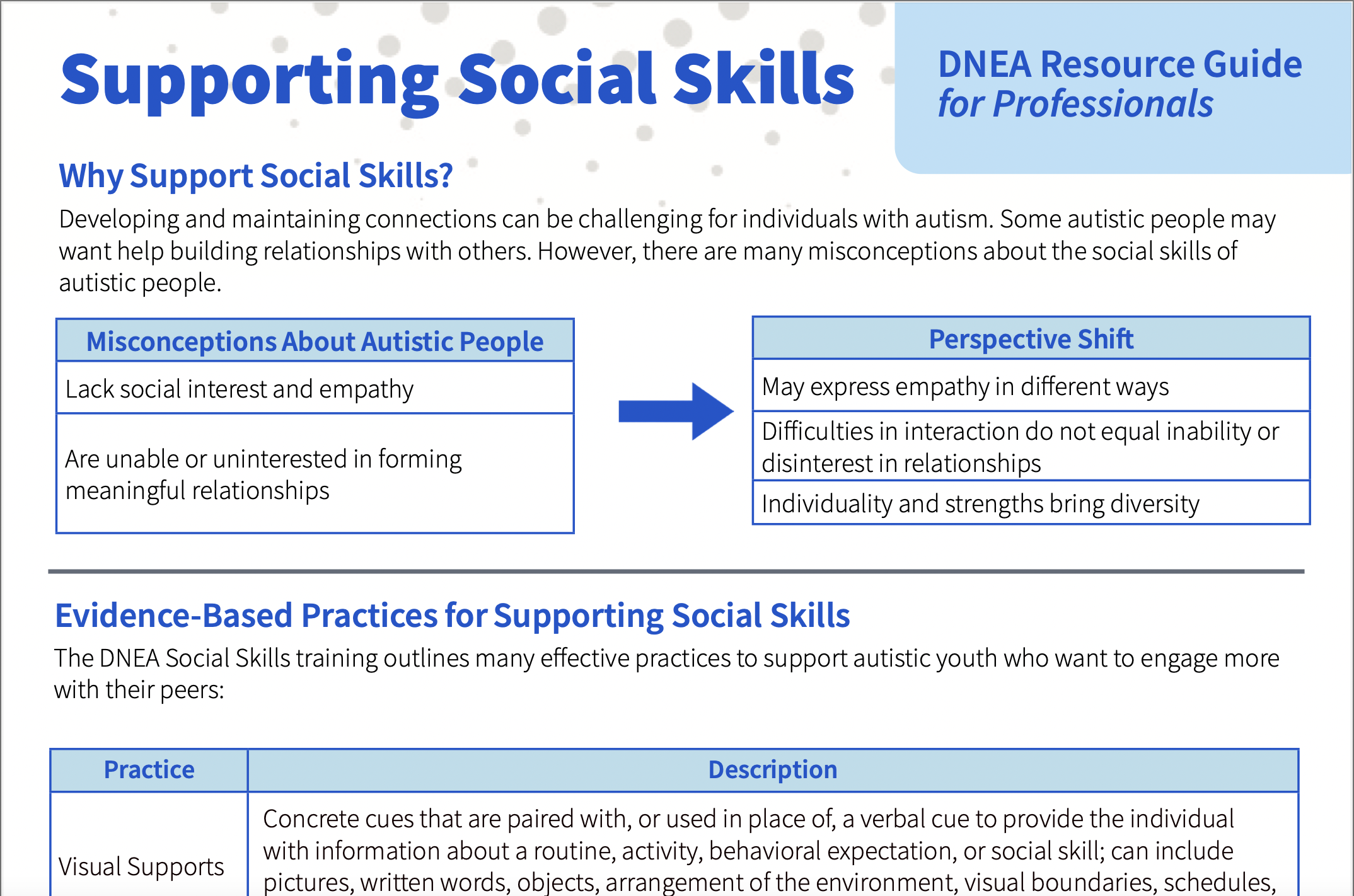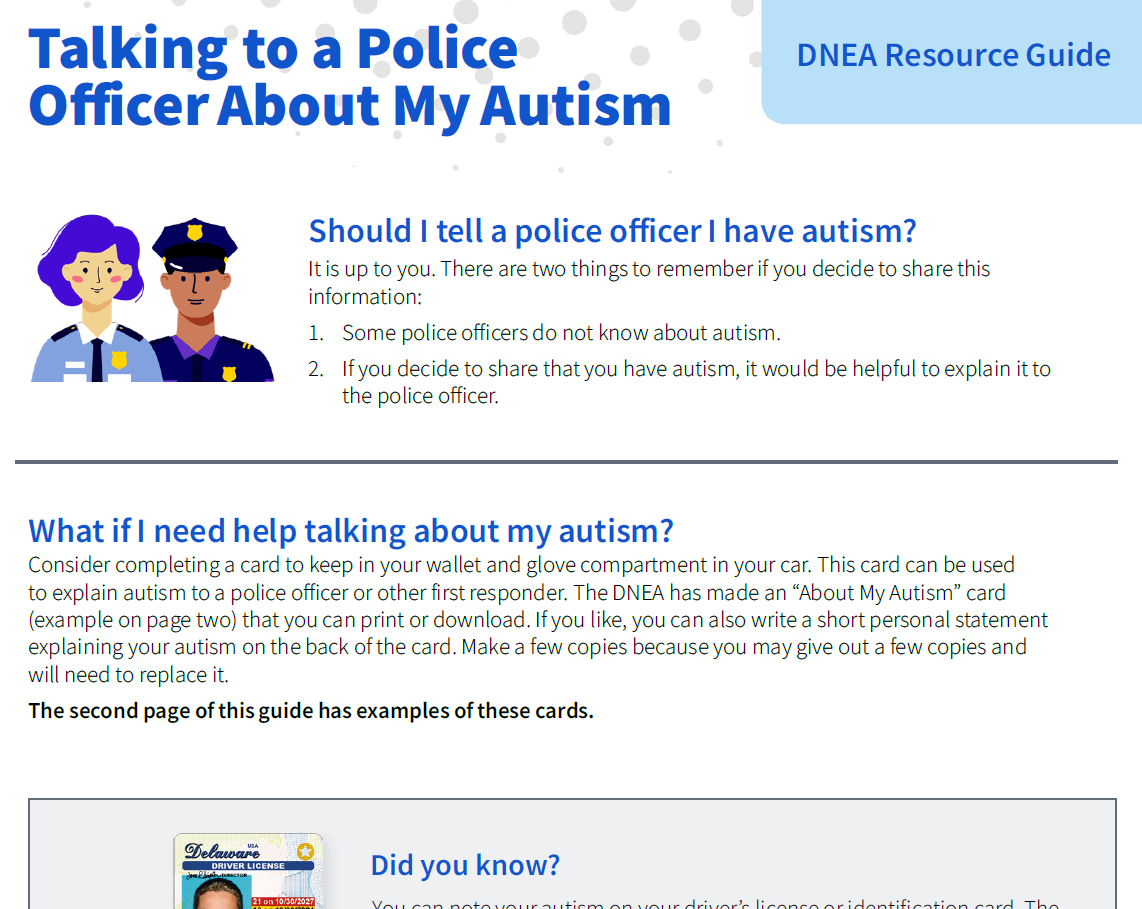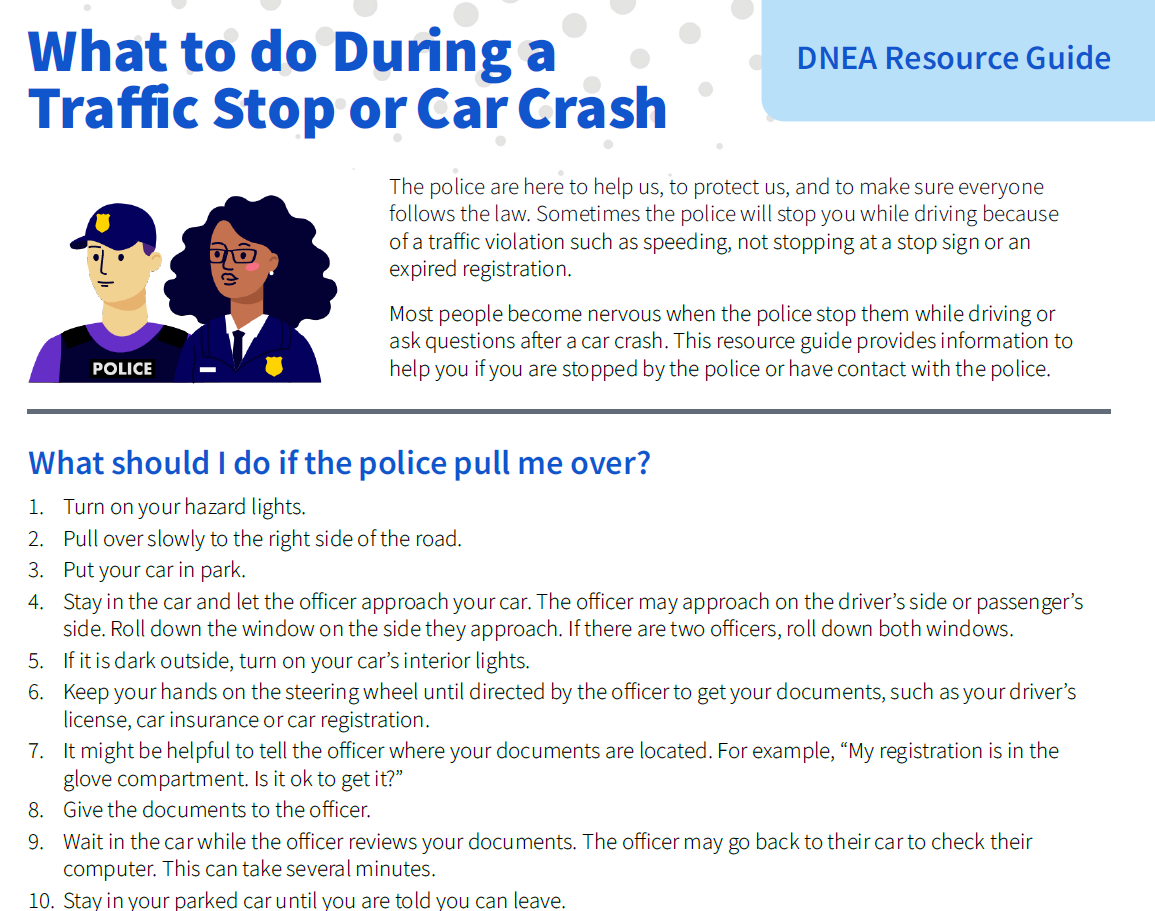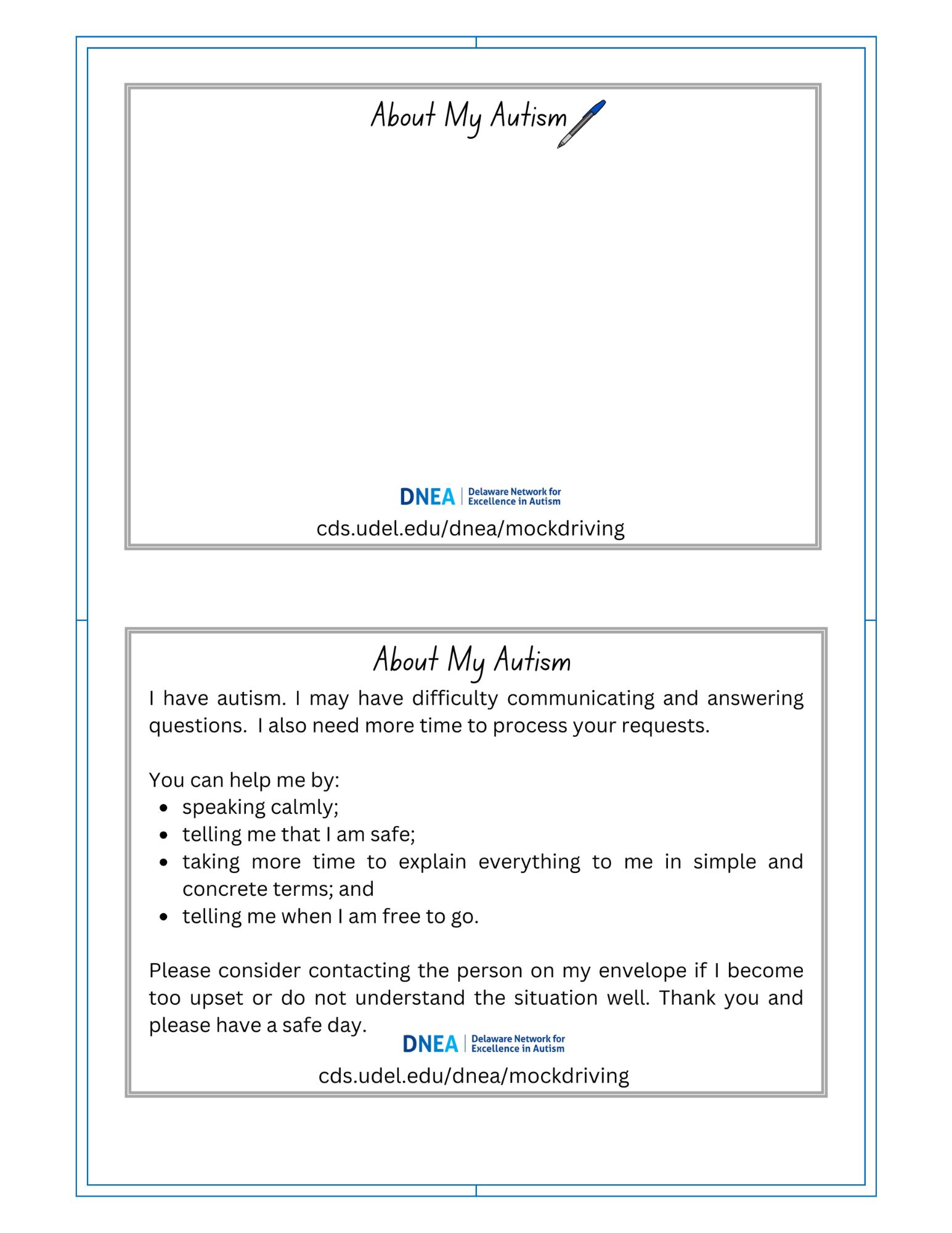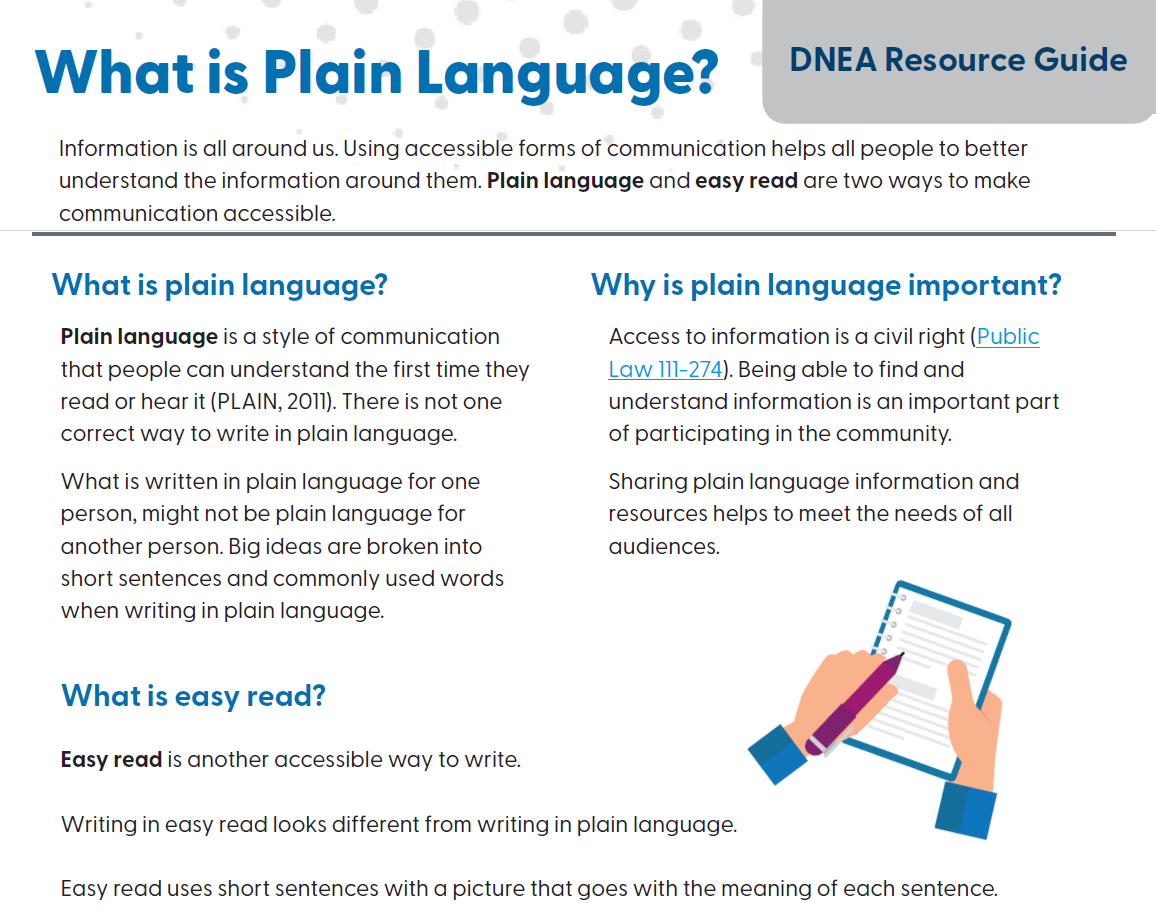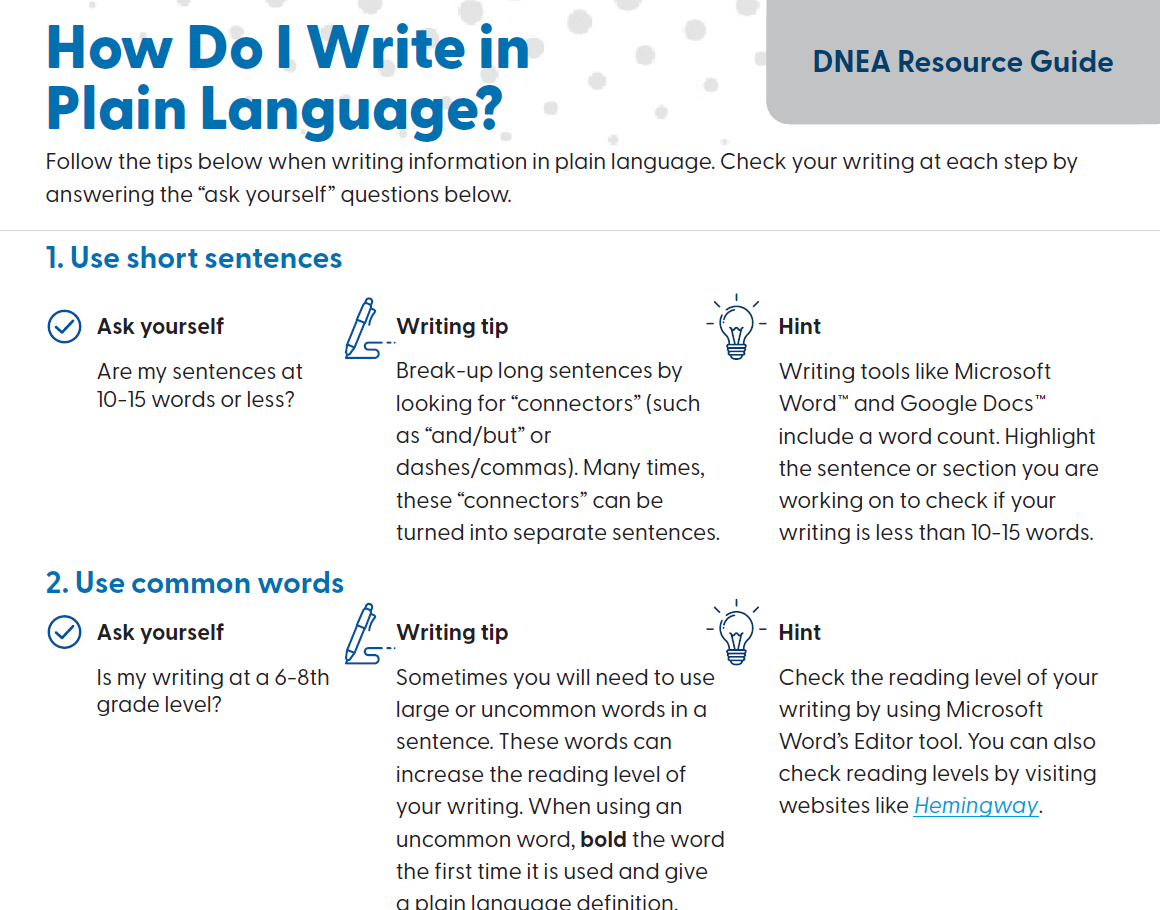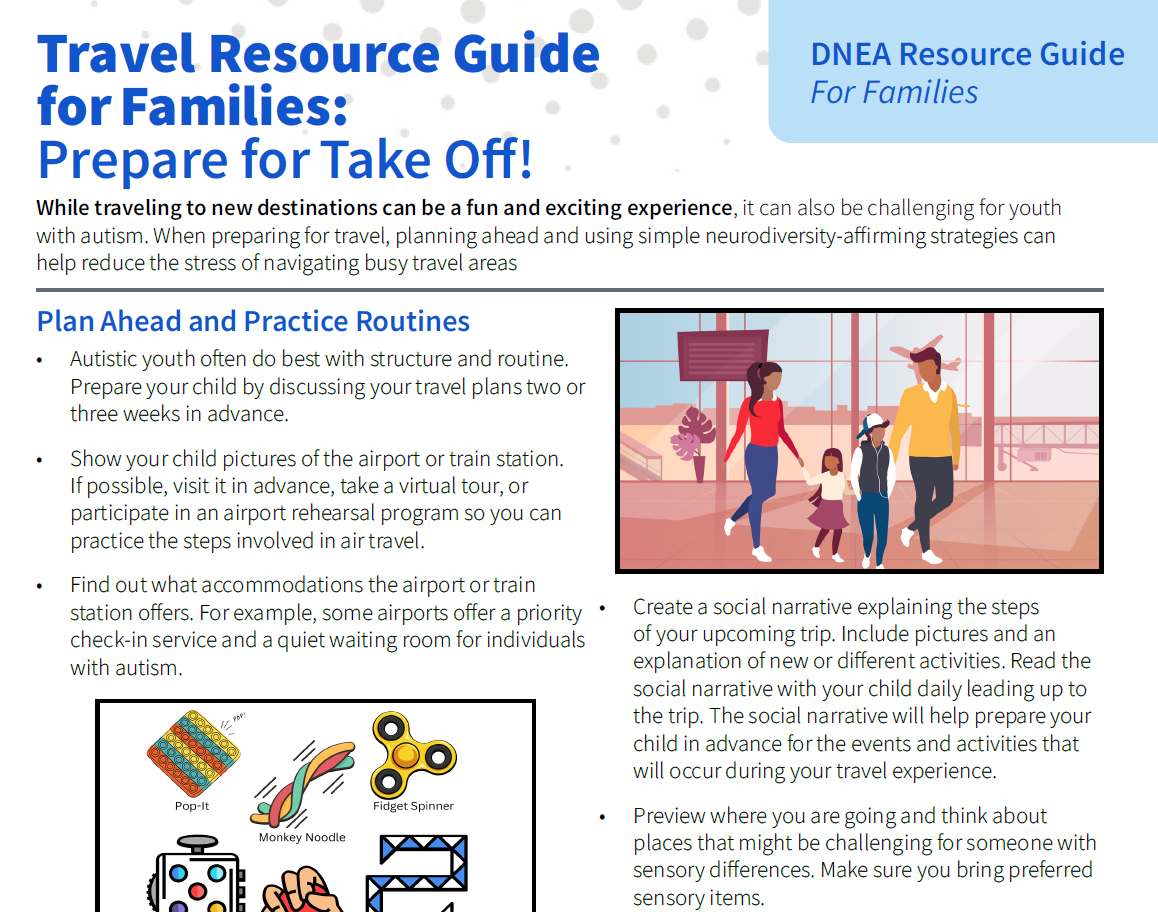Understanding Autism and Other Developmental Disabilities
What is Neurodiversity?
There are a lot of different terms related to neurodiversity. This resource guide defines some key terms and provides some useful tips and resources about autistic culture.
Avoid Ableist Language
Potentially Ableist Terms/ Discourses and Suggested Alternatives
Bookclub – We’re Not Broken
We’re Not Broken: Changing the Autism Conversation by Eric Garcia is about the author’s journey with autism and how society views individuals with autism.

Book Club- I will Die on this Hill
There is a significant divide between autistic advocates and parents of autistic children. This book unites both perspectives, exploring the rift between these communities and encouraging them to work towards a common goal.
Autism & Epilepsy
There are common genetic factors associated with both autism and epilepsy. This guide provides information around autism and epilepsy and outlines steps for how to support someone who is having a seizure.
Supporting Social Skills
The DNEA Supporting Social Skills guide highlights many effective practices to support autistic youth who want to engage more with their peers:
Autism and Mental Health
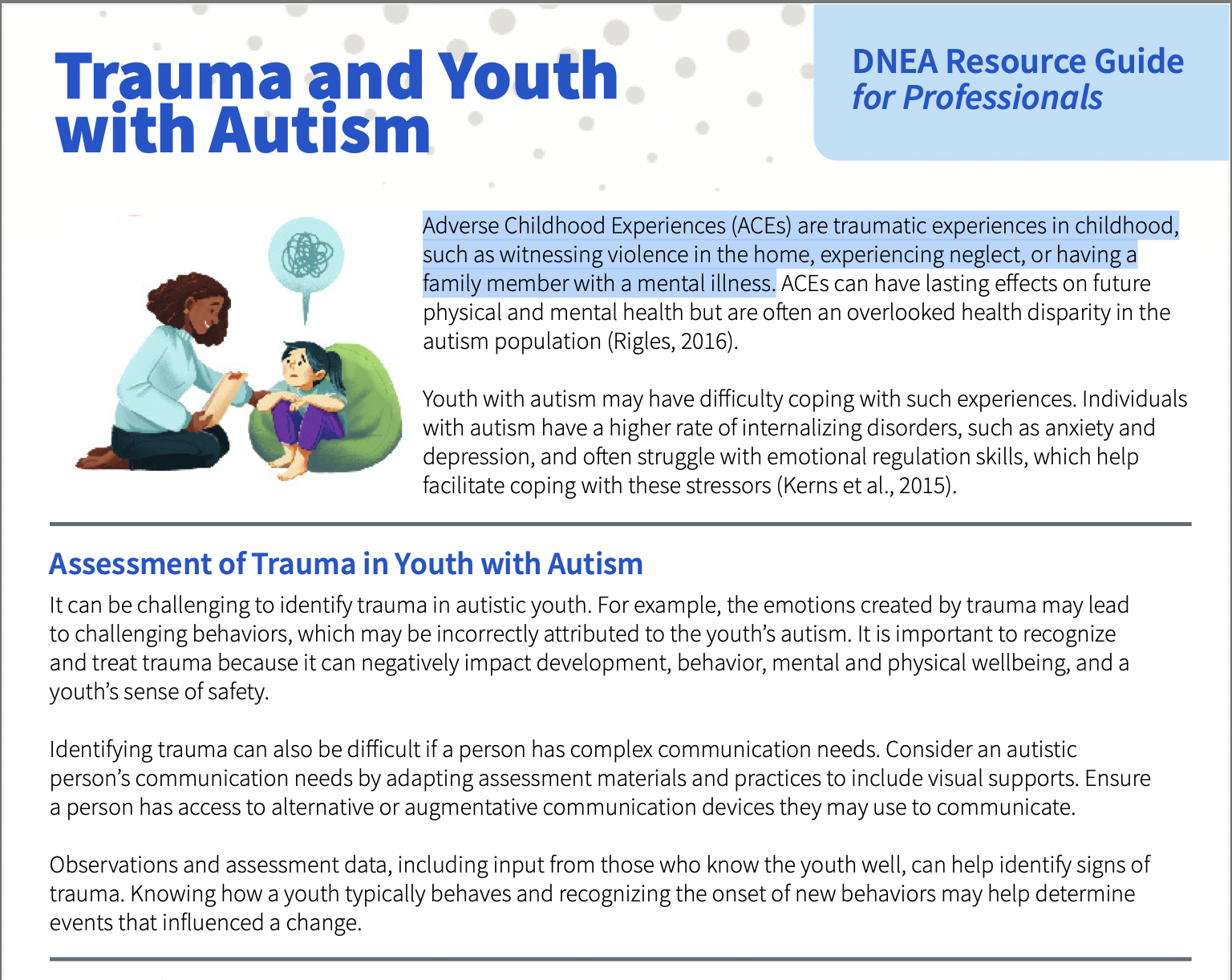
Trauma and Youth with Autism
Adverse Childhood Experiences (ACEs) are traumatic experiences in childhood, such as witnessing violence in the home, experiencing neglect, or having a family member with a mental illness.
Download the Resource Guide (English)
Versión en español de esta guía de recursos (Spanish)
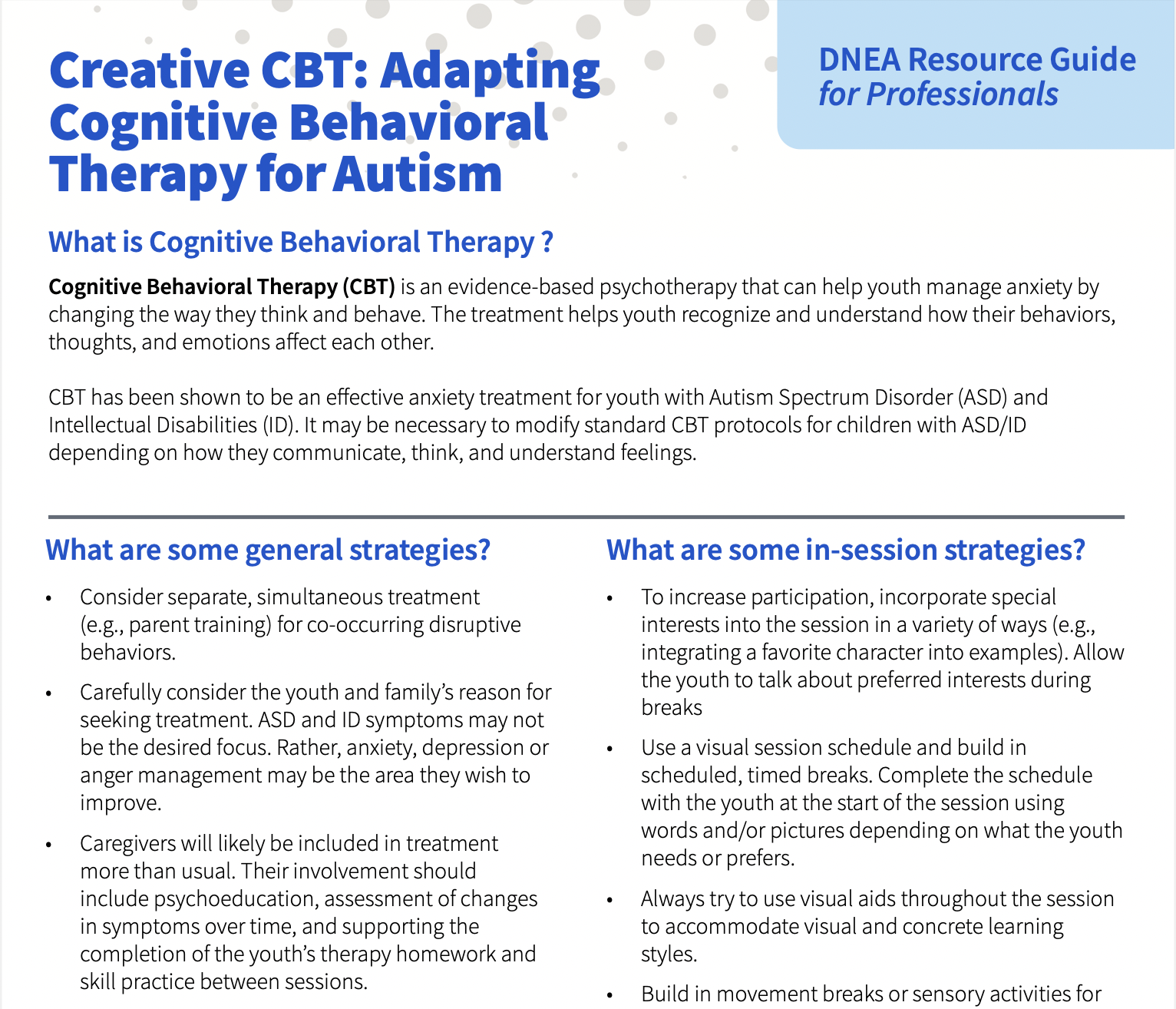
Creative CBT: Adapting Cognitive Behavioral Therapy for Autism
Cognitive Behavioral Therapy (CBT) is an evidence-based psychotherapy that can help youth manage anxiety by changing the way they think and behave.
Download the Resource Guide (English)
Versión en español de esta guía de recursos (Spanish)
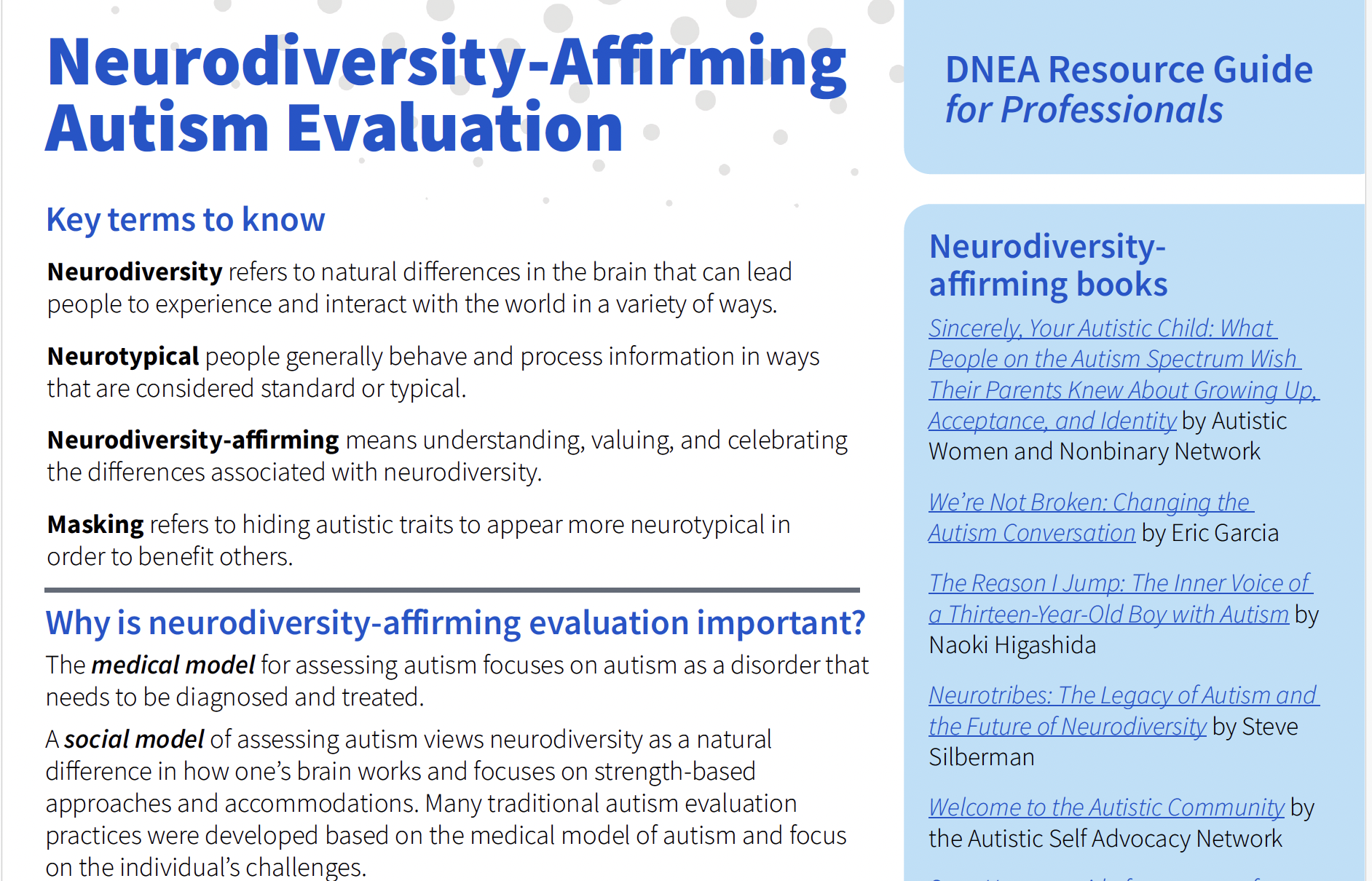
Neurodiversity-Affirming Autism Evaluation
An autism evaluation typically includes a discussion about challenges faced by the person and their family. This guide will provide professionals with strategies to discuss these issues in a more sensitive, non-judgmental fashion.
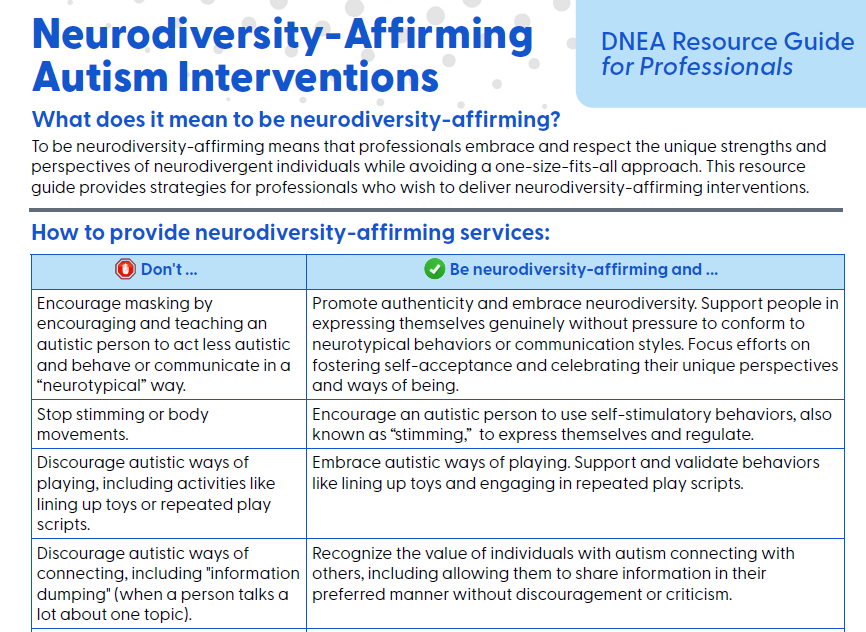
Neurodiversity-Affirming Autism Interventions
This resource guide provides strategies for professionals who wish to deliver neurodiversity-affirming interventions.
Download the Resource Guide
Practice Traffic Stop
Talking to a Police Officer About My Autism
Should I tell a police officer that I have autism? It’s up to you! This guide provides information about the DNEA’s About My Autism Card and details on noting your autism on your driver’s license or identification card at the Delaware DMV.
What to do During a Traffic Stop or Car Crash
The police are here to help and protect us and ensure everyone follows the law. Sometime, the police will stop you while driving because of a traffic violation such as speeding, not stopping at a stop sign, or an expired registration. This resource guide lays out the steps you can follow if the police pull you over, what you should do if you are in a car crash or if your car breaks down.
About My Autism Card
The About My Autism card can be used to explain autism to a police officer or other first responder. It is two-sided, allowing for space to write a short personal statement explaining your autism on the back of the card. The card can be downloaded or ordered using the “Order Resource Guide” button at the top right corner of this page.
Introductory Evidence-Based Practices
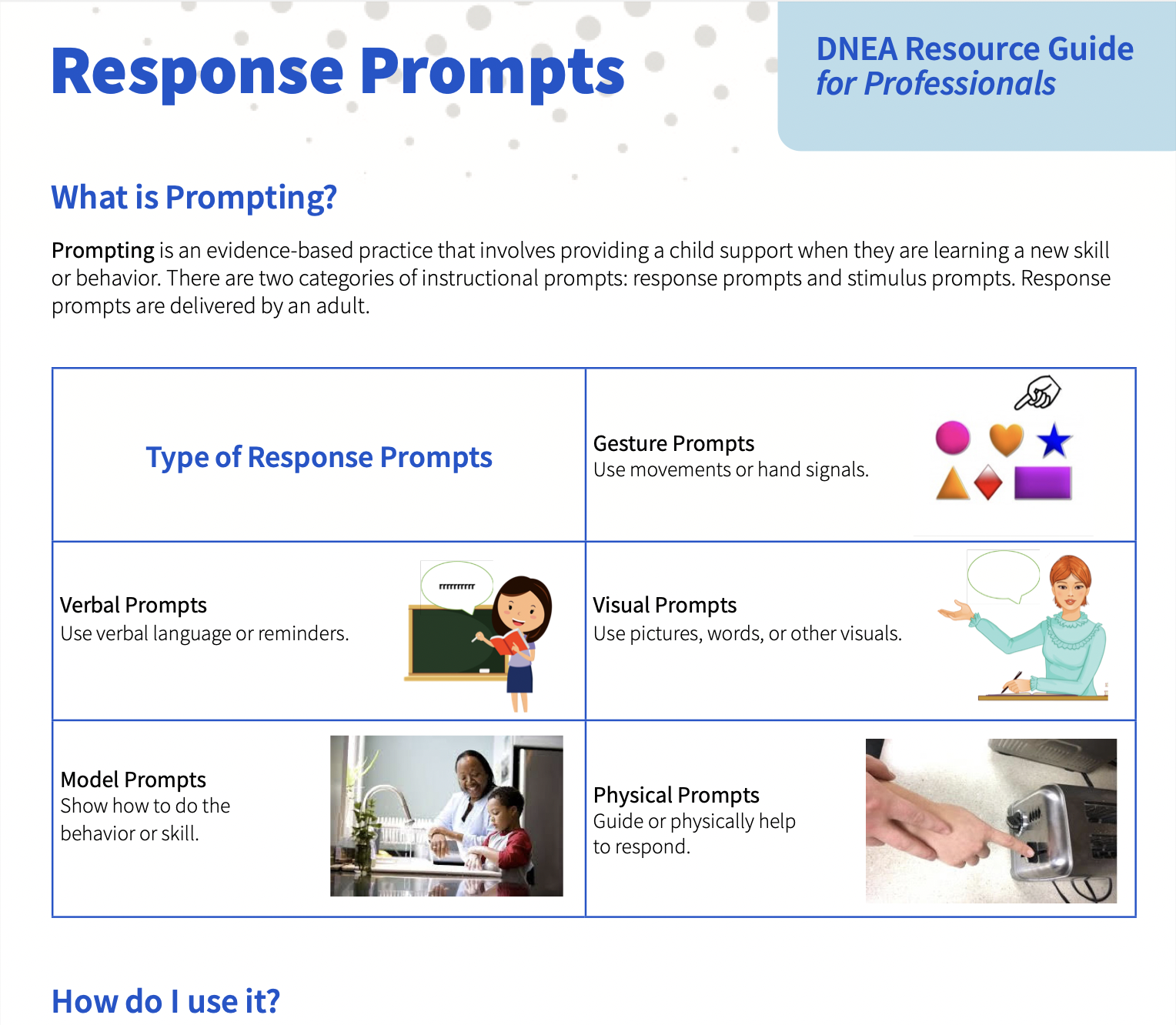
Response Prompts
Prompting is an evidence-based practice that involves providing a child support when they are learning a new skill or behavior. There are two categories of instructional prompts: response prompts and stimulus prompts. Response prompts are delivered by an adult.
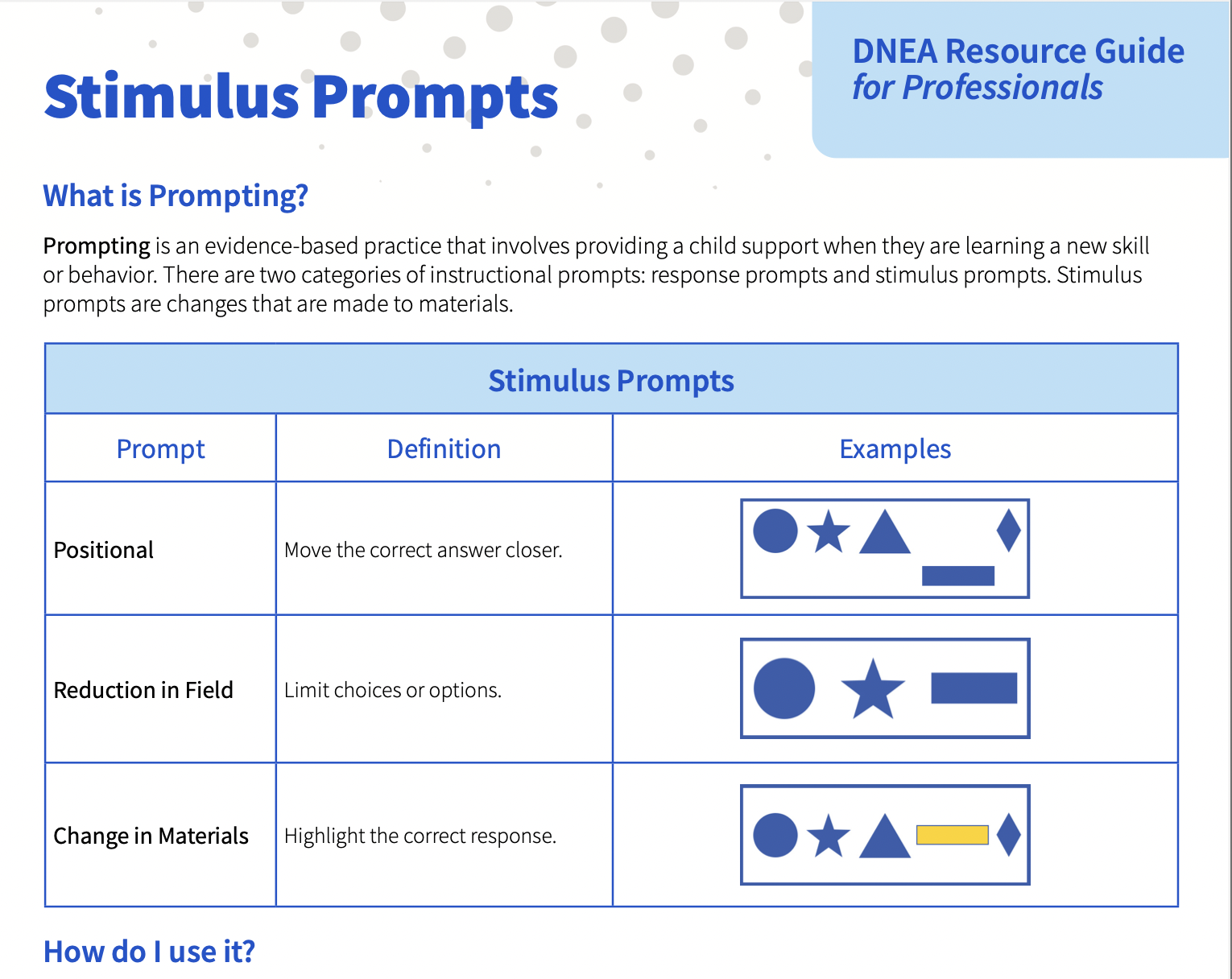
Stimulus Prompts
Prompting is an evidence-based practice that involves providing a child support when they are learning a new skill or behavior. There are two categories of instructional prompts: response prompts and stimulus prompts. Stimulus prompts are changes that are made to materials.
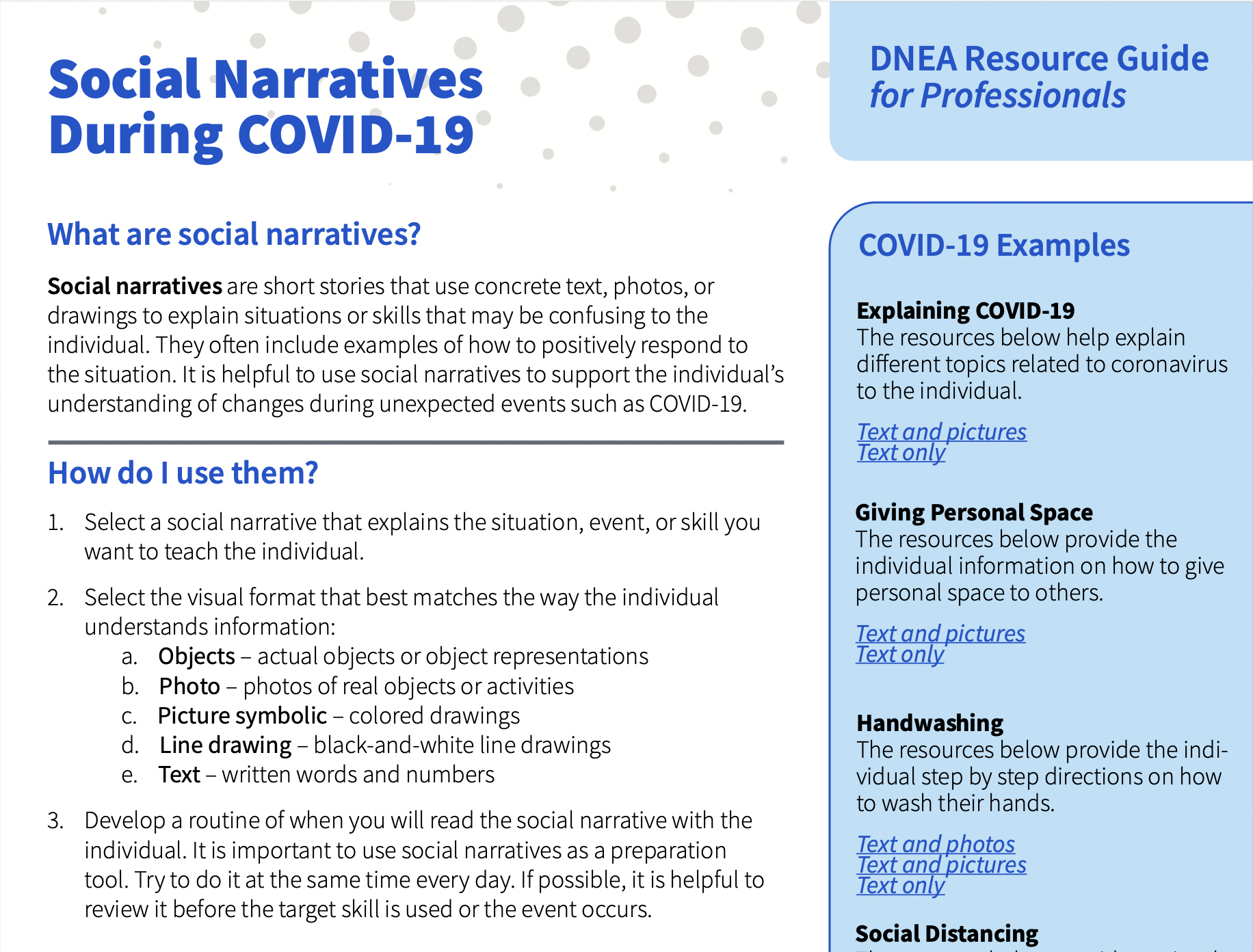
Social Narratives
Social narratives are short stories that use concrete text, photos, or drawings to explain situations or skills that may be confusing to the individual.
Download the Resource Guide (English)
Versión en español de esta guía de recursos (Spanish)
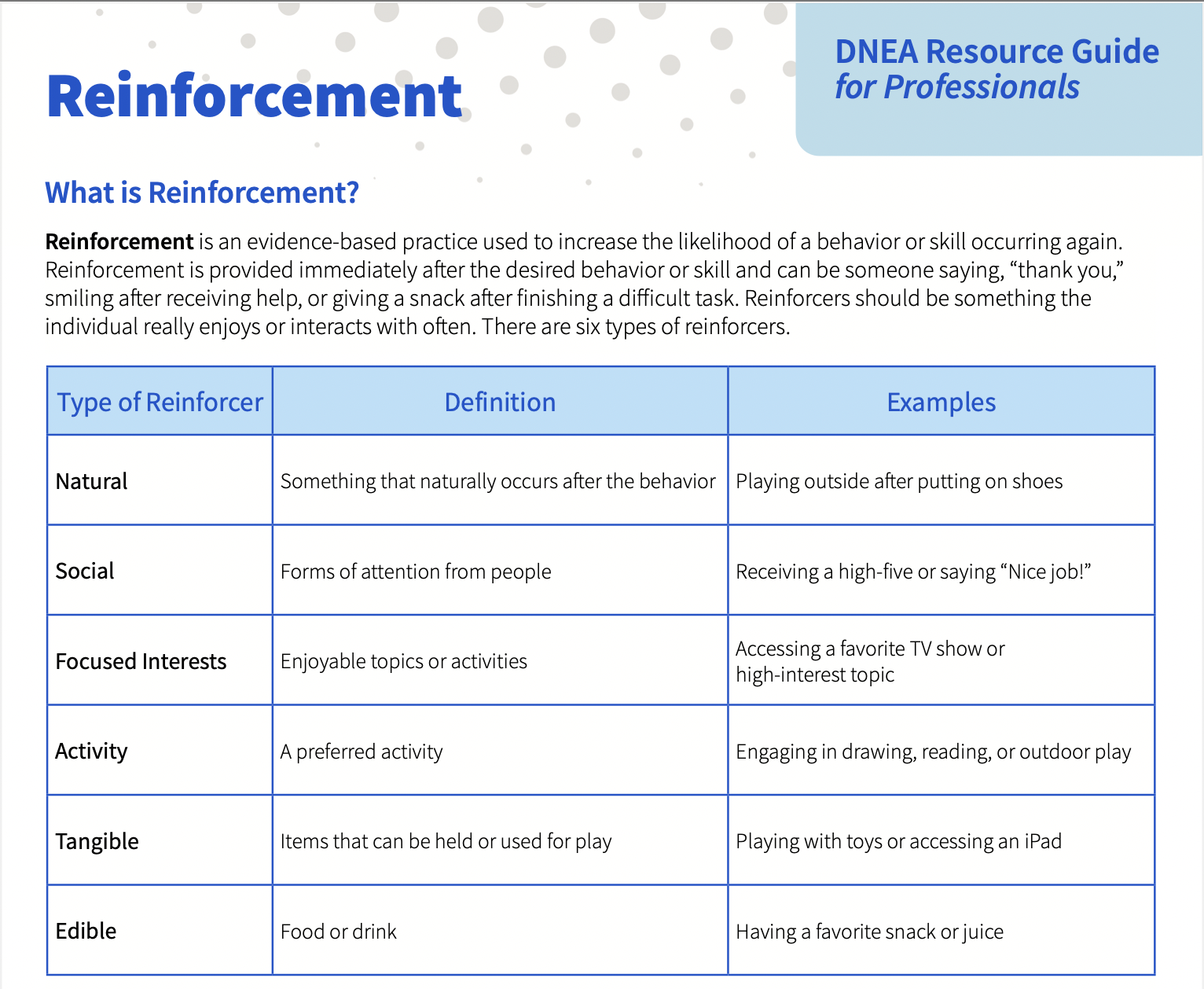
Reinforcement
Reinforcement is an evidence-based practice used to increase the likelihood of a behavior or skill occurring again.
Download the Resource Guide (English)
Versión en español de esta guía de recursos (Spanish)
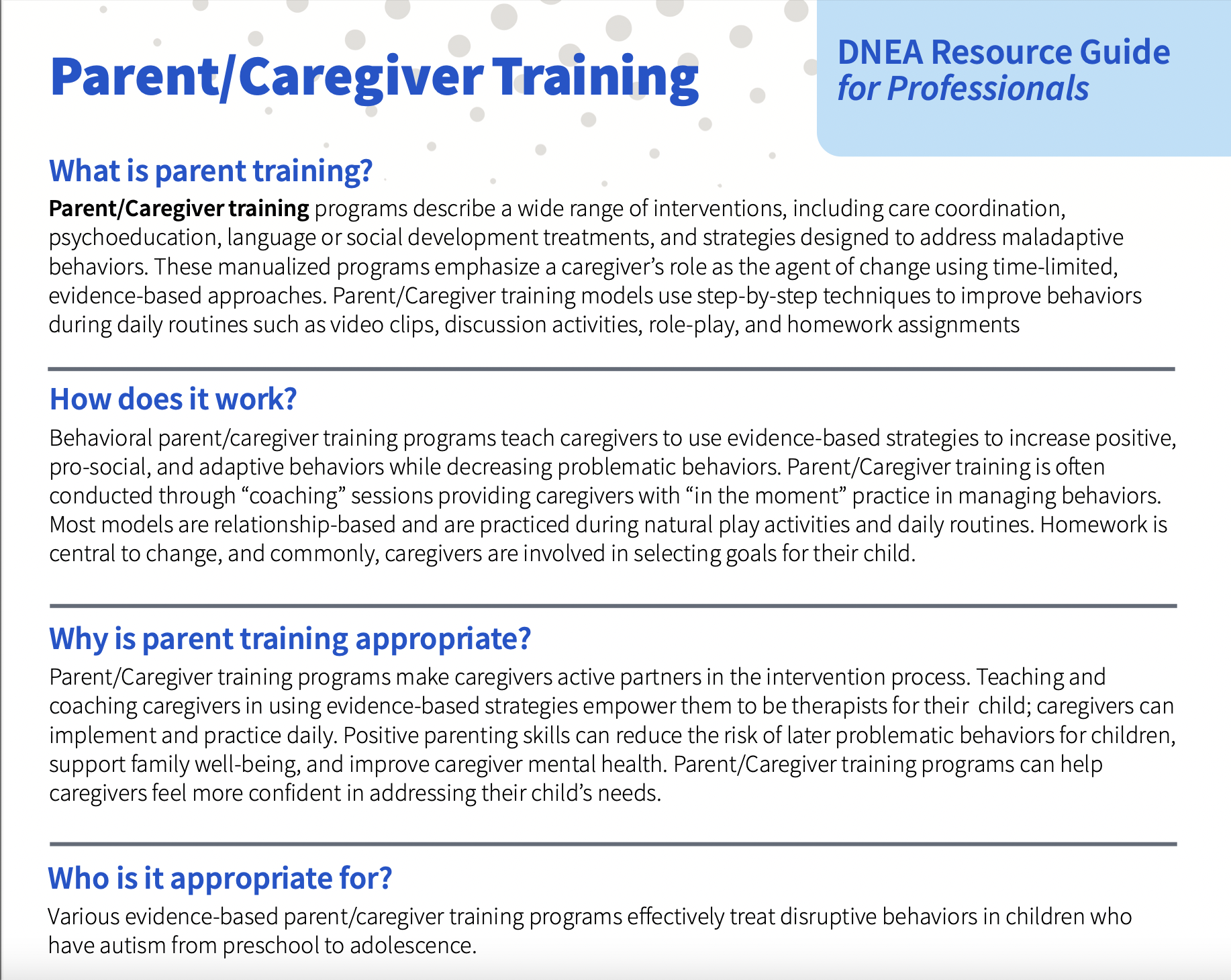
Parent/Caregiver Training
Parent/Caregiver training programs describe a wide range of interventions, including care coordination, psychoeducation, language or social development treatments, and strategies designed to address maladaptive behaviors.
Download the Resource Guide (English)
Versión en español de esta guía de recursos (Spanish)
Visual Supports

Visual Supports: Choice-Boards
Choice boards use pictures and/or words to show a person their options
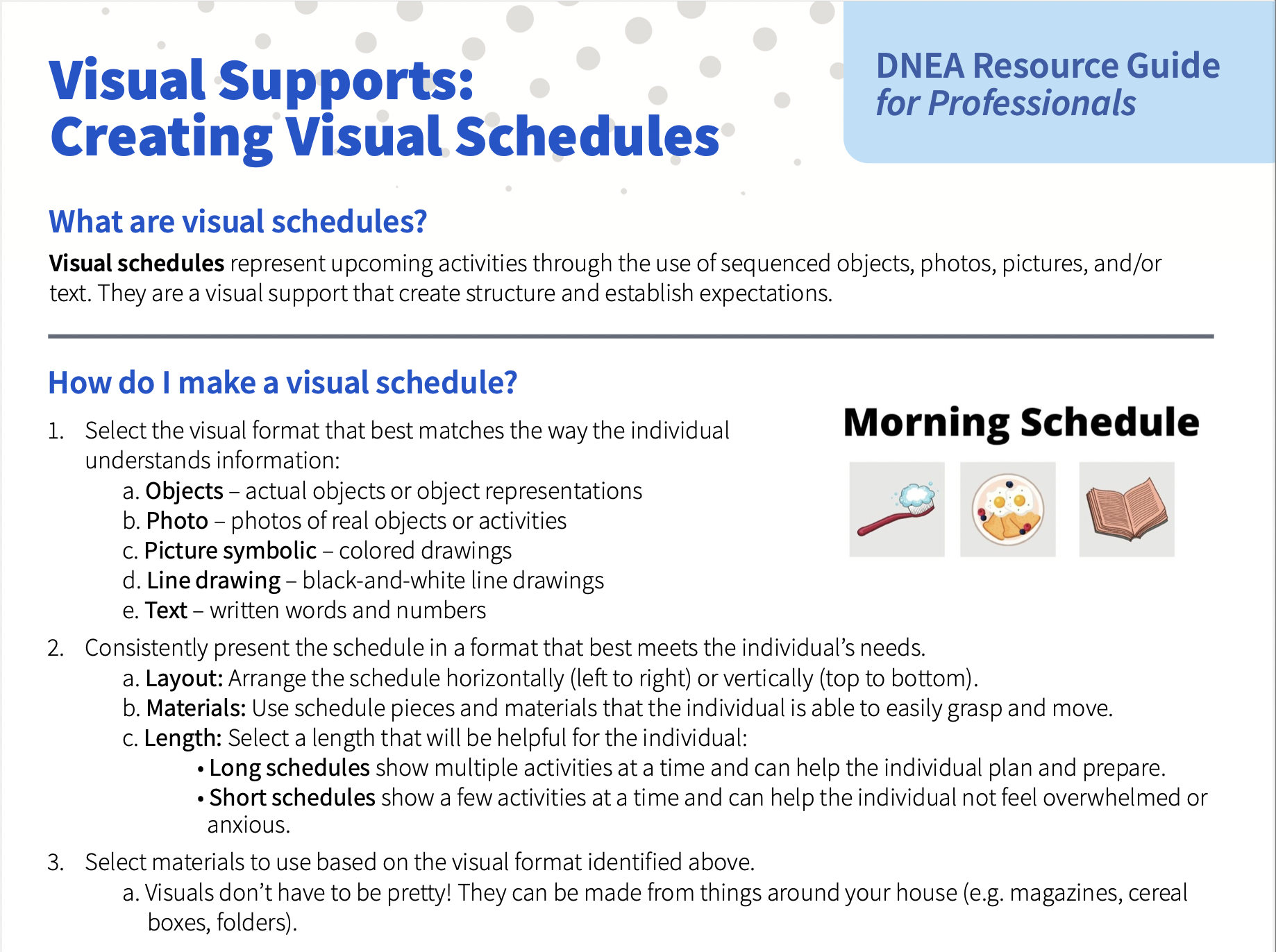
Visual Supports: Creating Visual Schedules
Visual schedules represent upcoming activities through the use of sequenced objects, photos, pictures, and/or text. They are a visual support that create structure and establish expectations.
Download the Resource Guide (English)
Versión en español de esta guía de recursos (Spanish)

Visual Supports: Environmental Labels
Environmental labels promote independence by clarifying what happens in a particular space or what is contained or located in a space

Visual Supports: Visual Boundaries
Visual boundaries use materials such as tape or furniture to create structure, predictability, and expectations in different areas of a person’s environment.

Visual Supports: Visual Task Analysis
Visual task analyses promote independence by using pictures and words to break down complex tasks into more manageable steps

Visual Supports: Visual Timers
Visual timers help make the abstract concept of time more concrete by showing the passage of time visually. They use pictures, colors, symbols, or numbers to show how much time is left in an activity.
Plain Language
What is Plain Language?
Plain language is a style of accessible communication. This means people can understand it the first time they read or hear it. This guide talks about what plain language is, why it is important, and shares examples of accessible communication.
How Do I Write in Plain Language
This guide shares basic tips that anyone can use to make their writing more accessible.
Discipline- and Content-Specific Evidence-Based Practices
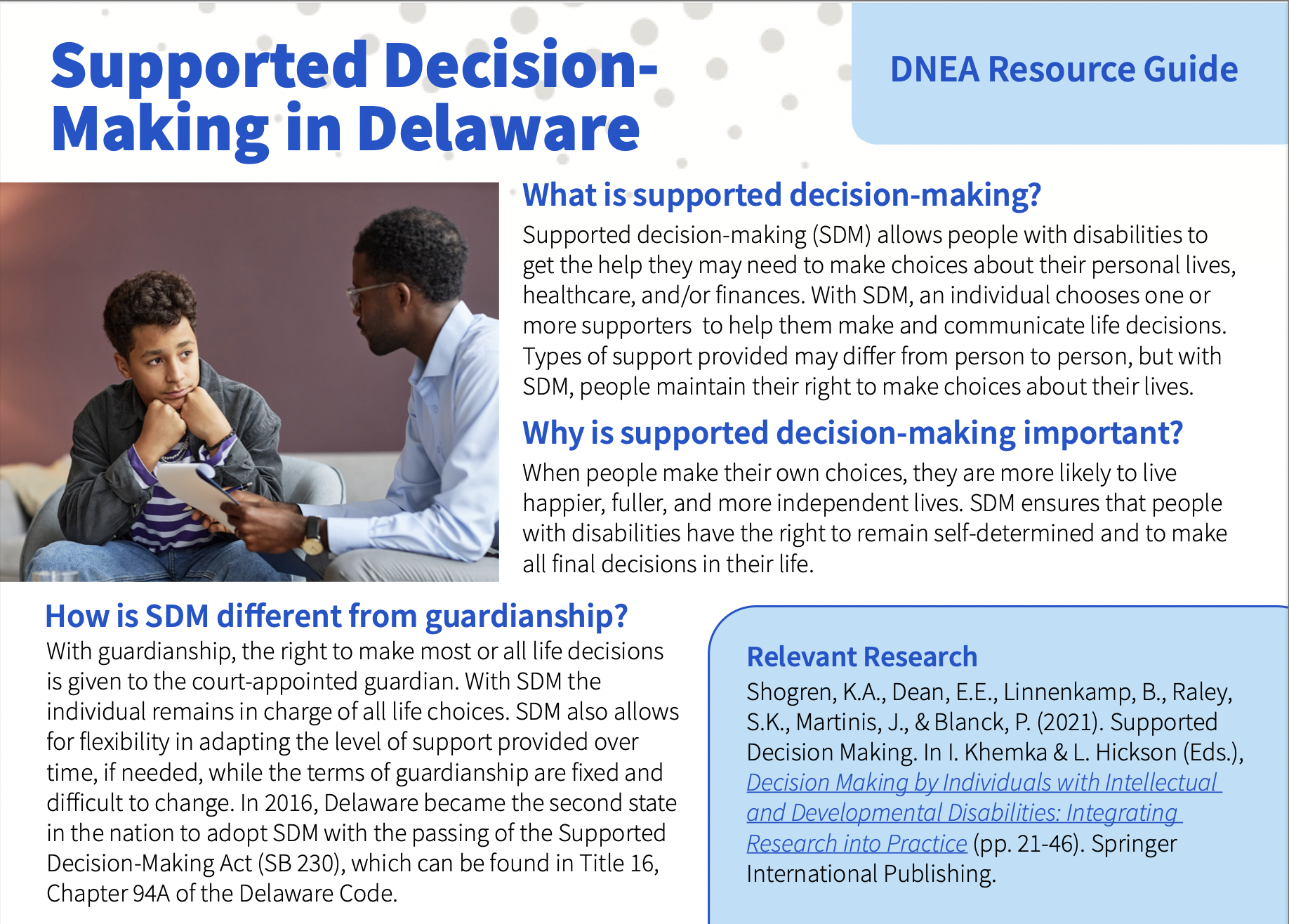
Supported Decision- Making
Supported decision-making (SDM) allows people with disabilities to get the help they may need to make choices about their personal lives, healthcare, and/or finances.

Understanding Supported Decision-Making in Delaware: A Guide for Community Members
This resource guide is tailored to professionals in diverse sectors, including banks, medical institutions, offices, and agencies.
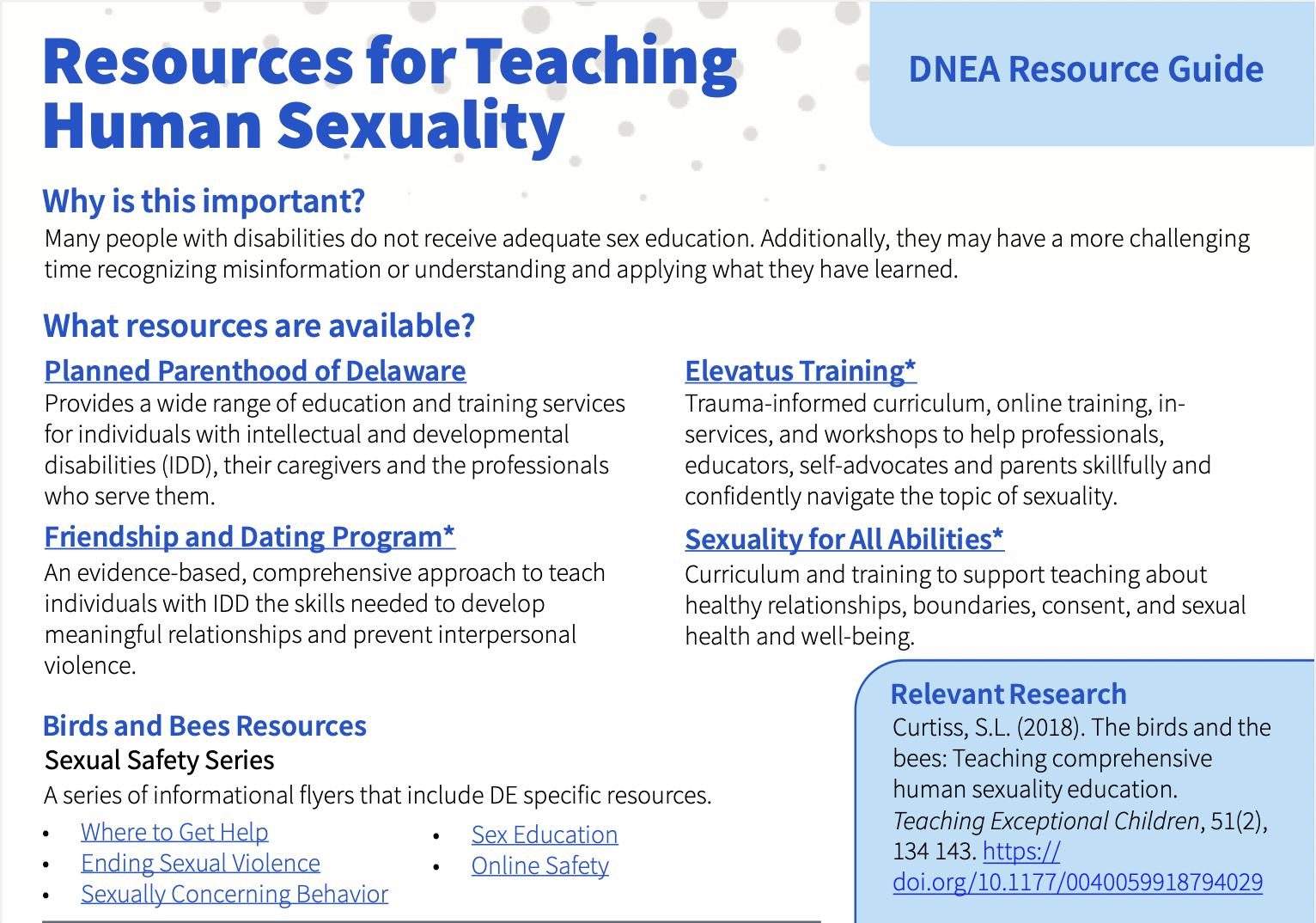
Resource for Teaching Human Sexuality
Many people with disabilities do not receive adequate sex education.
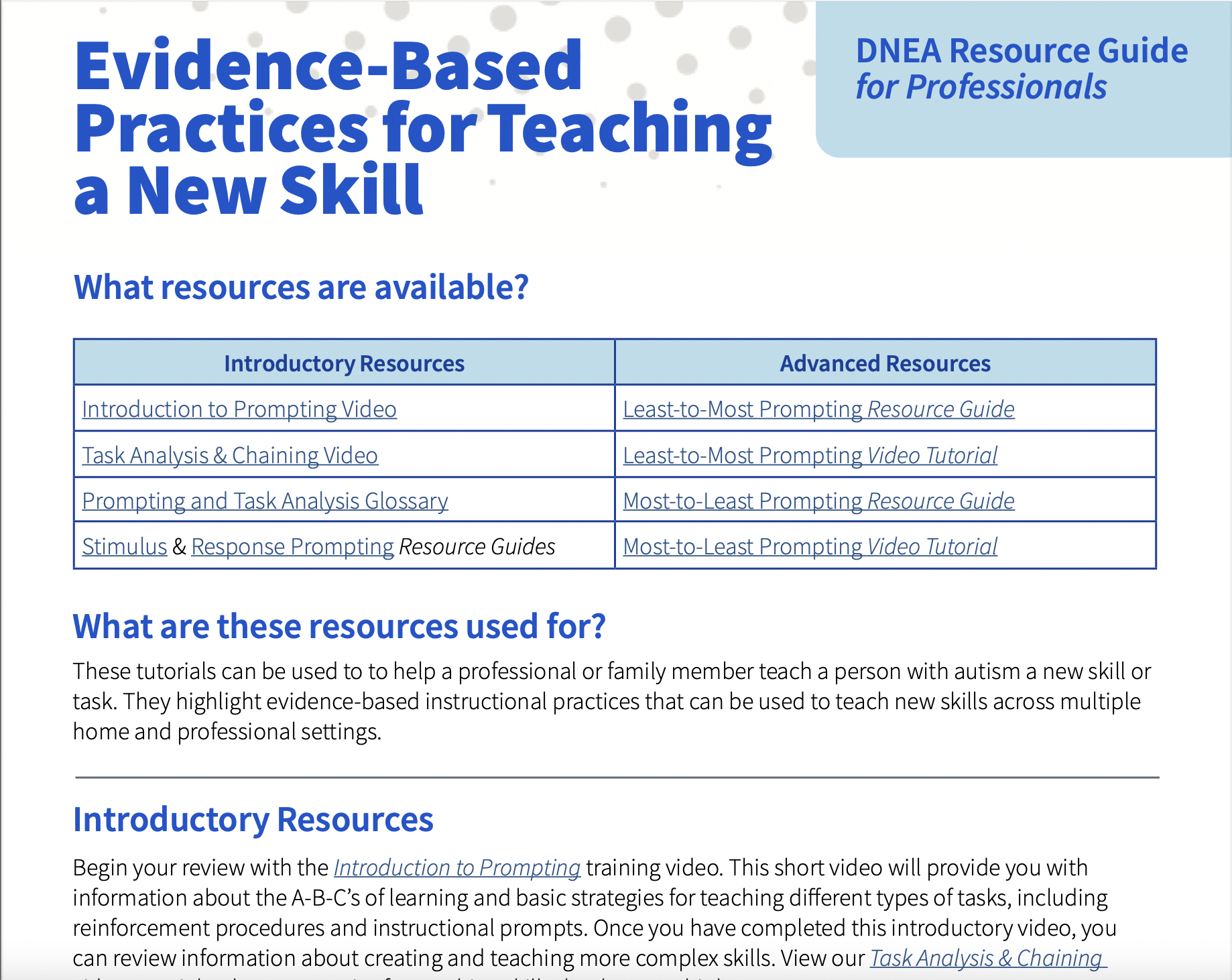
Evidence-Based Practices for Teaching a New Skill
These tutorials can be used to to help a professional or family member teach a person with autism a new skill or task. They highlight evidence-based instructional practices that can be used to teach new skills across multiple home and professional settings.
Download the Resource Guide (English)
Versión en español de esta guía de recursos (Spanish)
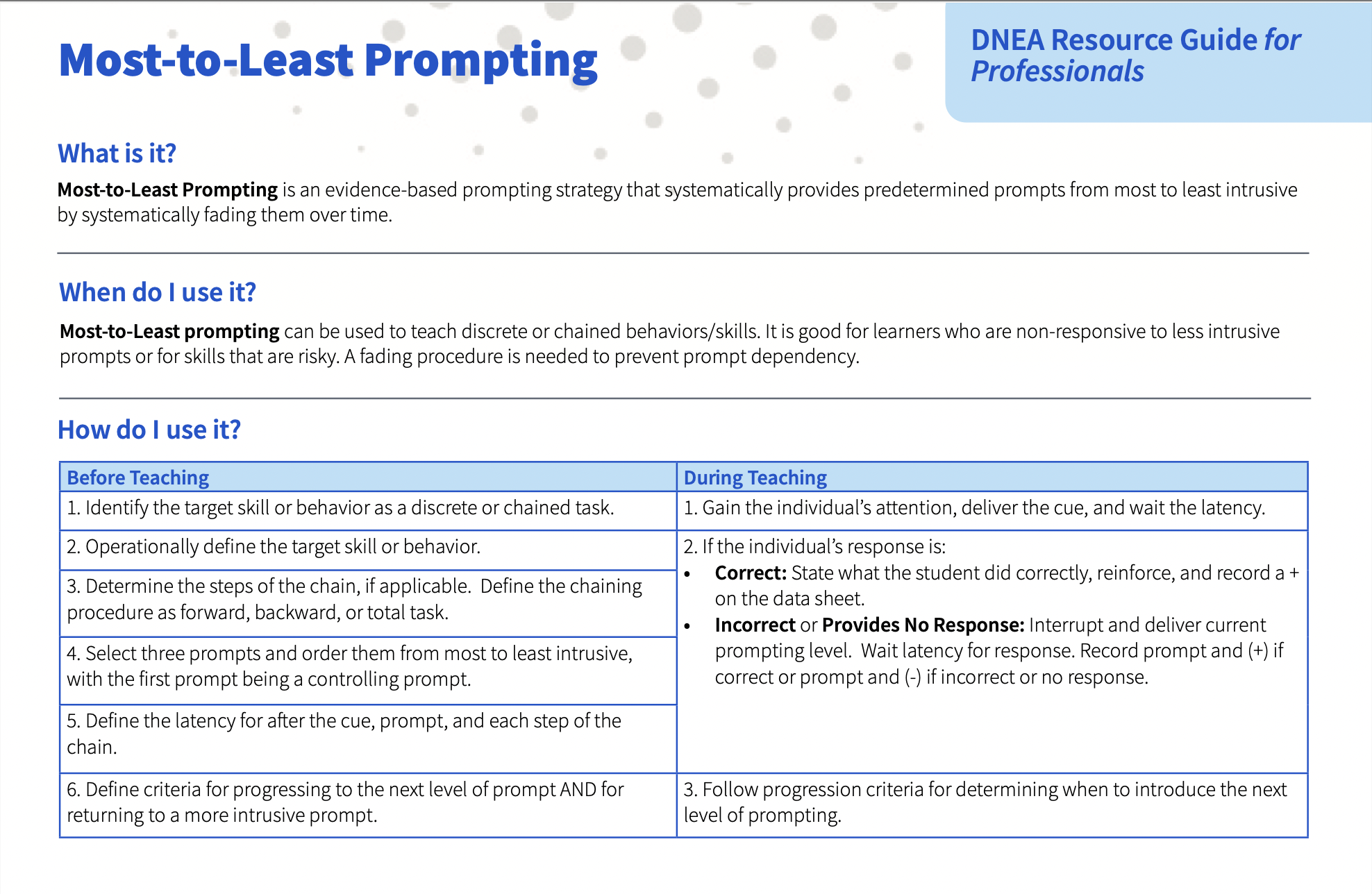
Most-to-Least Prompting
Most-to-Least Prompting is an evidence-based prompting strategy that systematically provides predetermined prompts from most to least intrusive by systematically fading them over time.
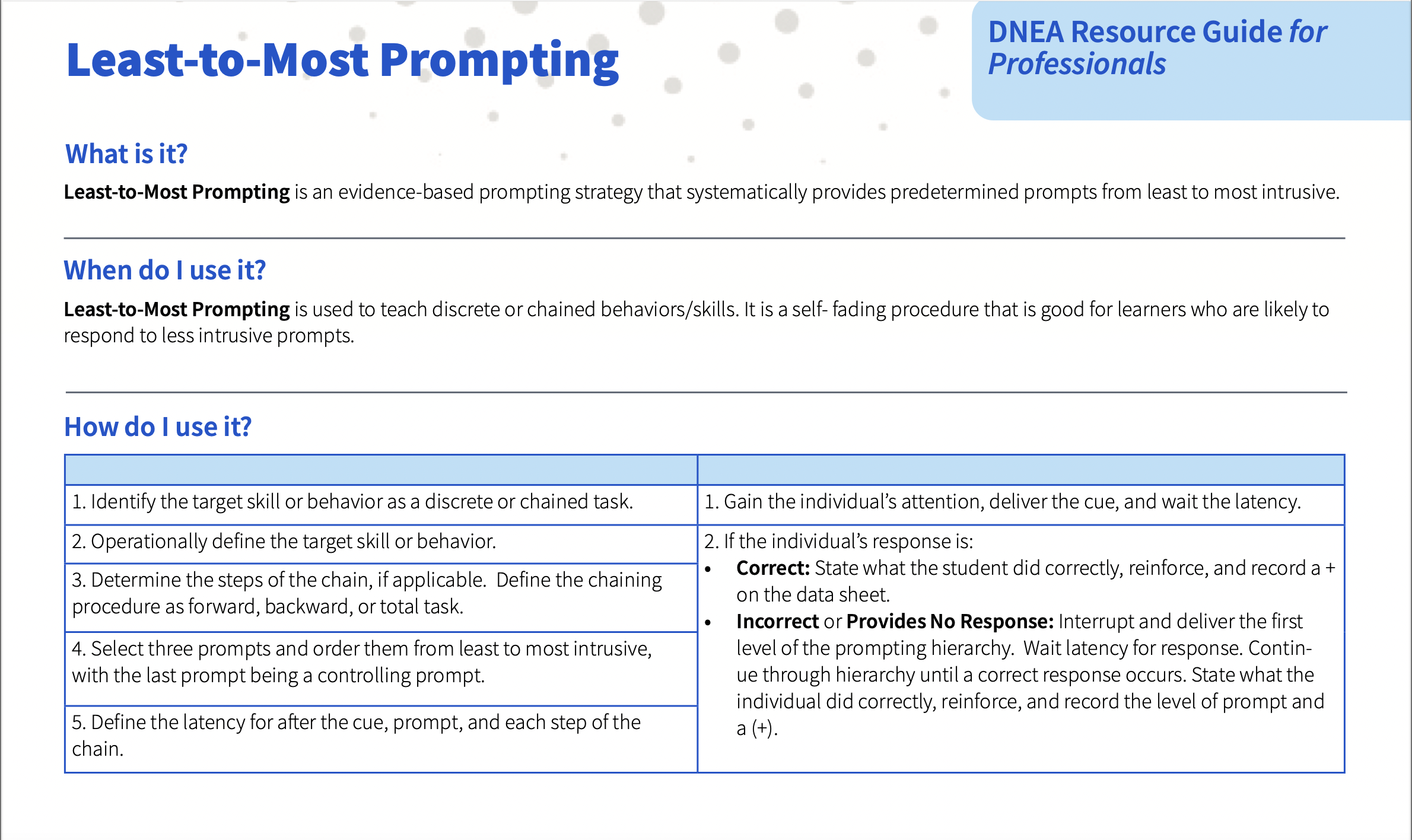
Least-to-Most Prompting
Least-to-Most Prompting is an evidence-based prompting strategy that systematically provides predetermined prompts from least to most intrusive.
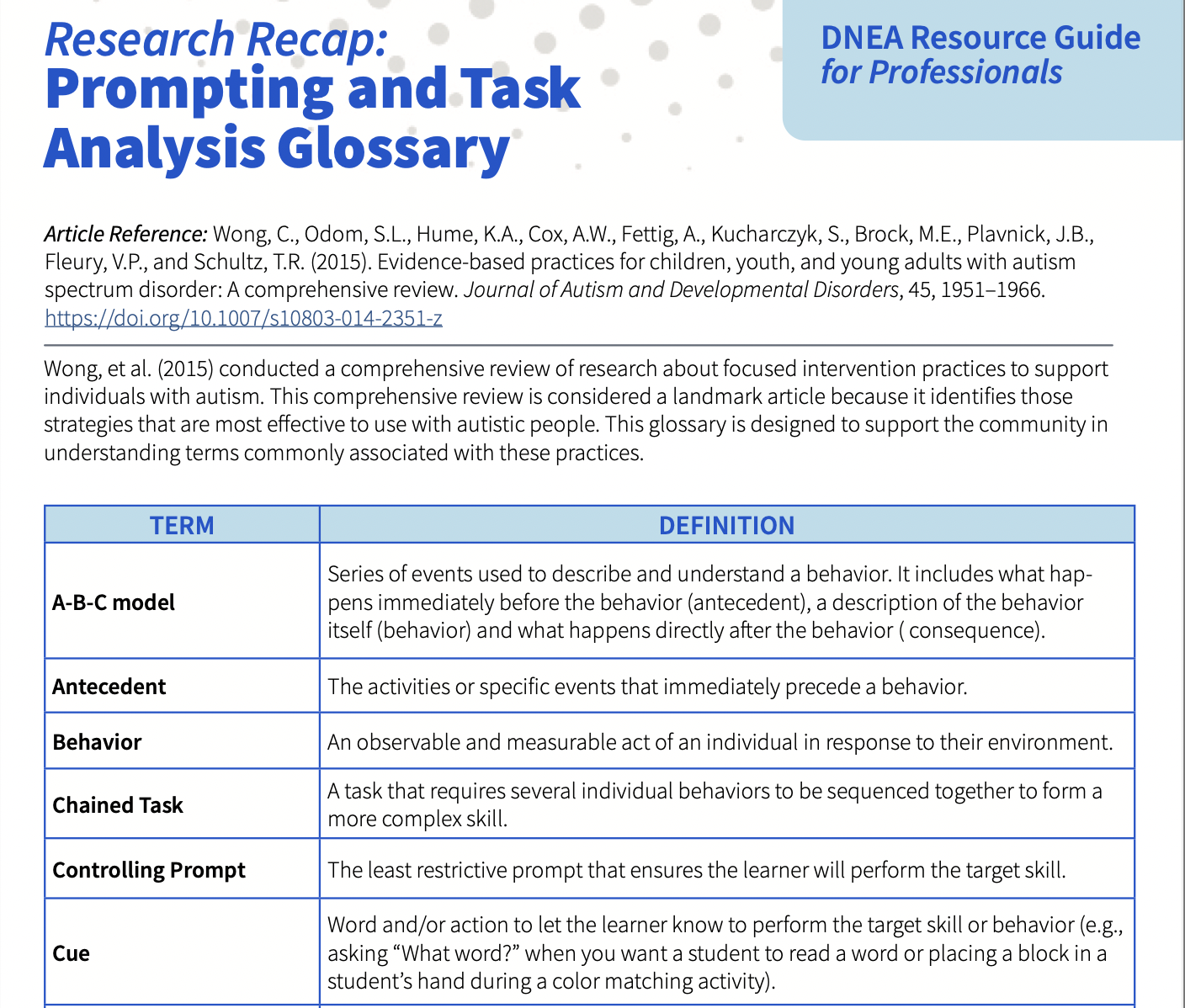
Prompting and Task Analysis Glossary
This glossary is designed to support the community in understanding terms commonly associated with these practices.
Download the Resource Guide (English)
Versión en español de esta guía de recursos (Spanish)
Family Resources
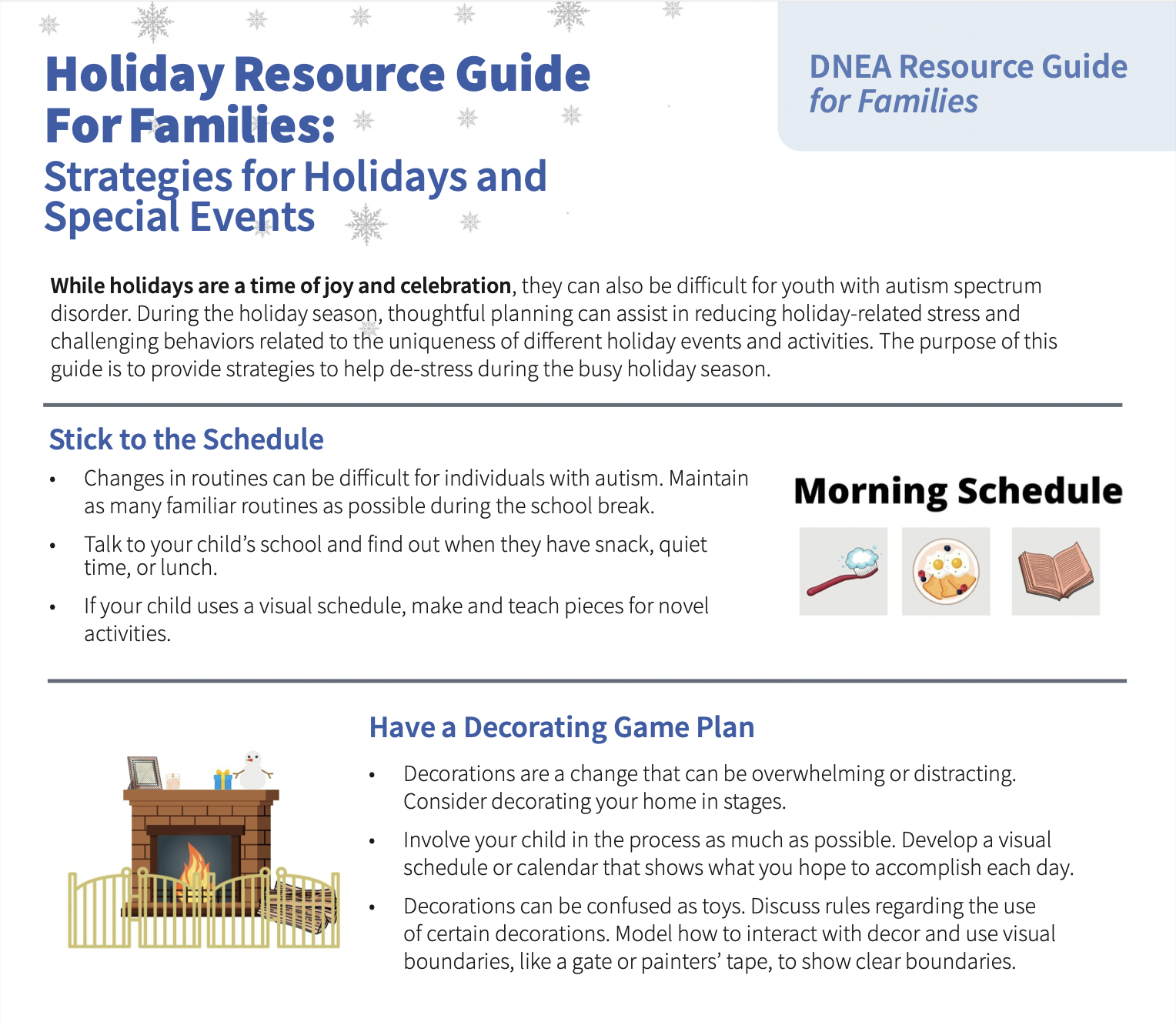
Holiday
While holidays are a time of joy and celebration, they can also be difficult for youth with autism spectrum disorder. The purpose of this guide is to provide strategies to help de-stress during the busy holiday season.
Download the Resource Guide (English)
Versión en español de esta guía de recursos (Spanish)
Travel
While traveling to new destinations can be a fun and exciting experience, it can also be challenging for youth with autism. This guide is designed to help families prepare for travel by planning ahead and using simple neurodiversity-affirming strategies.
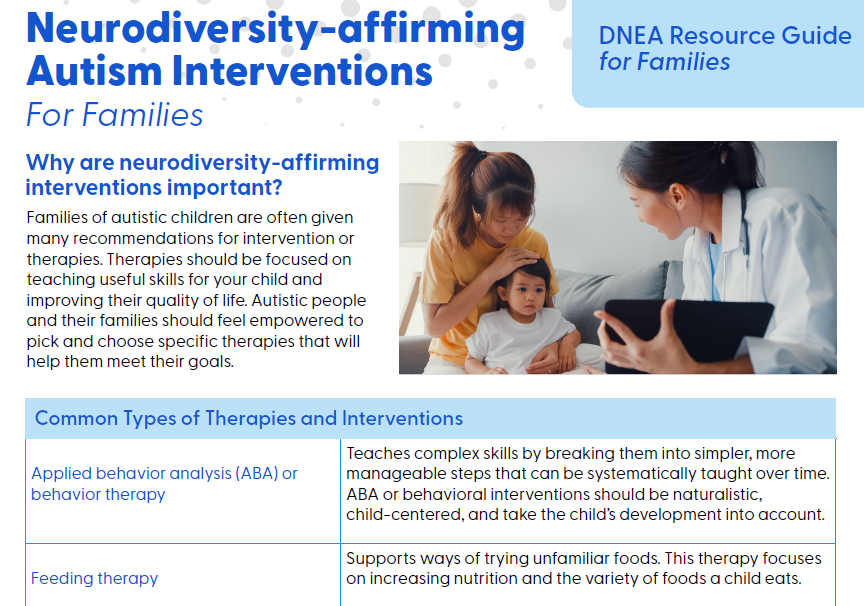
Neurodiversity-Affirming Autism Interventions for Families
Autistic people and their families should feel empowered to pick and choose specific therapies that will help them meet their goals.
Download the Resource Guide


